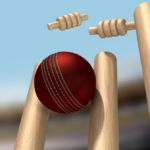The cricket pitch, a seemingly mundane rectangle of dirt, holds immense power over the flow and outcome of a match. Far from a passive backdrop, the is a dynamic entity, its character shaping every delivery bowled and every shot played. Understanding these intricacies is paramount for bowlers, batsmen, and captains alike.
A Stage Set for Drama: Unveiling Pitch Types
Cricket pitches can be broadly categorized into three main types:
- Fast Bowler’s Paradise: The Lively Pitch
Imagine a surface brimming with life, where the ball explodes off the length, whistling past the batsman’s ear. This is the domain of the fast bowler, a paradise where swing and seam take center stage. Fresh pitches, with a covering of grass, offer early assistance to swing bowlers. The seam of the ball catches the uneven surface, causing it to deviate mid-air, leaving batsmen in a constant state of vulnerability. As the match progresses, the grass wears down, exposing the underlying harder surface. This is when seam bowlers come into their element, exploiting subtle nicks and inducing edges that carry to the slips.
- The Turner’s Playground: The Spin-Friendly Pitch
A stark contrast to the lively pitch is the turner, a haven for spinners. These surfaces, often dry and devoid of grass, offer significant assistance to bowlers who impart spin on the ball. As the ball it interacts with the dry top layer, gripping and turning prodigiously. The legendary Shane Warne’s repertoire of leg-spinners and googlys thrived on such surfaces, bamboozling batsmen with the sheer unpredictability of the turning ball. Spinners on turning become wicket-taking machines, their deliveries spitting and turning viciously, often trapping batsmen plumb in front or inducing mistimed shots that find fielders.
- The Balanced Battlefield: The Batting Beauty
The ideal pitch, from a batsman’s perspective, is a batsman’s paradise or a batting beauty. These surfaces offer a fair contest between bat and ball. The bounce is true, with minimal swing or seam movement for the initial part of the innings. As the match progresses, the might deteriorate slightly, offering some assistance to spinners later in the innings. However, overall, these allow batsmen to score freely, with strokeplay and technique dictating success. Sachin Tendulkar the master of batting, feasted on such surfaces, his elegant drives and cuts a testament to his ability to capitalize on good batting conditions.
Beyond the Basics: Unveiling the Nuances
The categorization of pitches is just the first step. Several subtle factors add further layers of complexity:
- Moisture Content: The amount of moisture in the pit-ch significantly impacts its behavior. A damp pit-ch offers more even bounce and might assist swing bowling early on. As the dries out, it becomes livelier, aiding seam bowling and later turning for spinners.
- Soil Composition: The underlying soil plays a crucial role. Clay pitches are known to hold moisture for longer, offering assistance to spinners even later in the innings. Sandy pit-ches, on the other hand, drain faster, providing a good balance between bat and ball throughout the match.
- Grass Cover: The length and density of the grass cover significantly impact the initial behavior of the pit-ch. A thick covering offers significant swing bowling assistance, while a sparse covering allows the ball to come onto the bat quicker.
Masters of the Craft: Adapting to Pitch Conditions
Great players are not just defined by their skill but also by their ability to adapt to varying conditions. Batsmen who can adjust their strokeplay to handle swing or spin, and bowlers who can modify their deliveries to exploit the surface – these are the ones who thrive across formats and conditions.
- The Art of Reading the Pitch: Experienced players develop a keen eye for deciphering behavior. Subtle observations, like the bounce of the first few deliveries or the bowler’s footmarks, provide valuable insights. This “reading of the pit-ch” allows players to strategize their approach accordingly.
- Tailoring Techniques: Batsmen might employ different techniques to counter swing or spin. Footwork adjustments to play the ball closer to the body against swing or using the sweep shot effectively against spin are just a few examples. Bowlers, in turn, might alter their pace, length, or line of attack to exploit the pitch’s characteristics.
The Pitch: A Silent Dictator of the Game
The pitch, though seemingly passive, is a silent dictator of the game’s flow. Understanding its character – the bounce, swing, seam movement, and potential for turn – is crucial for success. From the fast bowler unleashing fury on a lively surface to the spinner weaving magic on a dry turner, the pi-tch provides the stage for cricketing artistry to unfold. So, the next time you witness a thrilling contest, remember, it. And more amazing news and articles read so visit CricketCentric.



